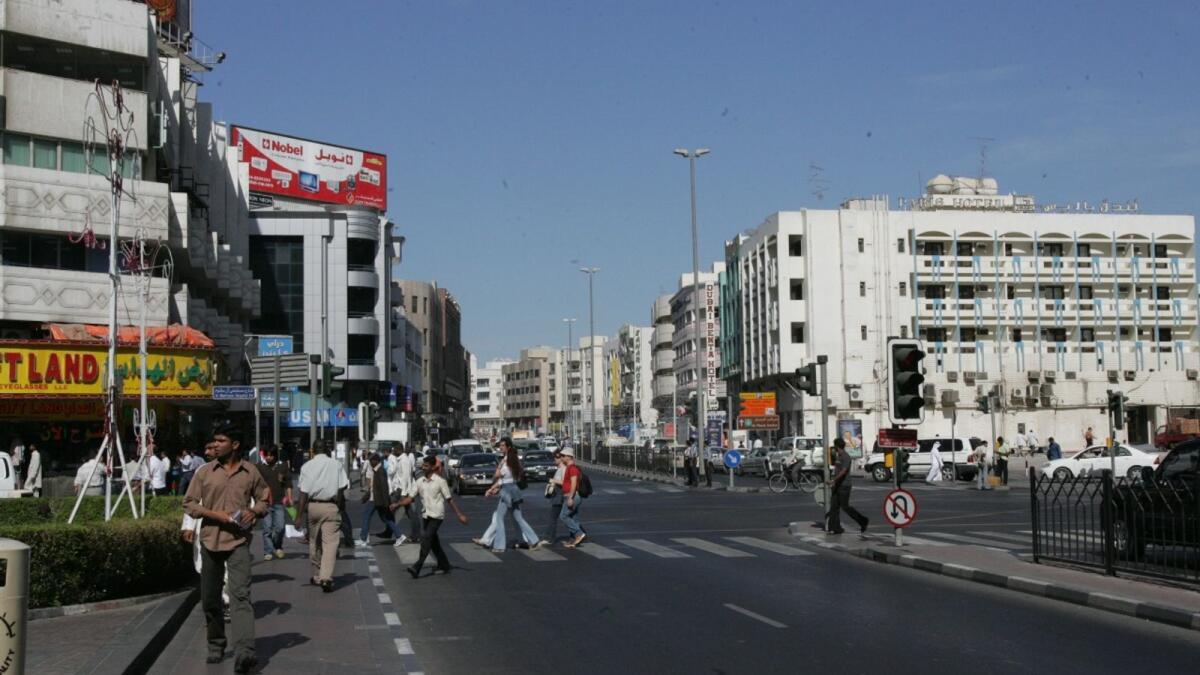
Some Dubai Areas See Shortage Of Smaller Apartments
Real estate industry executives say that Old Dubai areas such as Bur Dubai and Deira are facing a shortage because not many new projects have come up due to the lack of availability of development areas in those localities, failing to keep up with the demand amidst the fast-growing population in the emirate.
Dubai's population grew more than 100,000 last year and by over 176,000 in the past two years, mainly driven by the inflow of foreign expatriate workers, professionals and investors into the emirate. Meanwhile, the number of new units delivered in the past couple of years is much less than the growth of the population, resulting in a shortage of smaller units to rent.
Real estate consultancy Asteco's quarterly showed affordable and old Dubai areas also witnessing a double-digit increase in apartment rentals in the third quarter of 2023, increasing by up to 23 per cent when compared to the same quarter last year.
In addition, New Dubai areas offer the advantage of owning properties in freehold areas, prompting higher demand for new units and enticing developers to launch more projects in the new and upcoming areas.
Industry executives say there is enough supply in the New Dubai areas for smaller units to meet the population's growing demand, which is estimated to reach nearly 6 million by 2040.
Focus on high-end developments"Old Dubai faces a shortage of smaller units, featuring larger and more spacious apartments constructed 20 to 35 years ago. During that period, Dubai's population was significantly smaller, mainly comprising families with several children. Consequently, private owners developed notably spacious apartments with multiple rooms to meet the demands of the residents and citizens. For instance, the majority of two-bedroom units include an extra room for a helper, along with spacious laundry and storage rooms, not to mention en-suite bathrooms for each room," said Svetlana Vasilieva, sales director for secondary market at Metropolitan Homes.
Alan James Gammon, chief operating officer of ACE Luxury Property, said there are several reasons for this scarcity, including population growth, increased demand for small living areas and a focus on building high-end real estate developments rather than affordable housing options.
Gammon added that the demand for old established communities in Dubai remains high, particularly in Bur Dubai and Deira, where limited capacity for new construction exists.
"While Old Dubai's cultural richness adds to its appeal, the scarcity of space hinders the availability of smaller homes and additional services. Therefore, many new residents in old areas have to live in sublet and shared apartments."
Gammon added that New Dubai, characterised by its contemporary residential and retail projects, expansive land area, and luxurious residences, offers a greater supply of studios and one-bedroom units. "The allure of a modern lifestyle, coupled with state-of-the-art infrastructure and amenities, attracts residents to New Dubai, potentially leading to shortages in these sought-after areas. But the New Dubai lifestyle comes with a bit higher price tag."
Over the last few years, as Dubai's property market continued booming, Lewis Allsopp, chairman of Allsopp & Allsopp, said the market also saw a rise in luxury, ultra-luxury, and branded residences. Since then, the market has also seen a limited availability of affordable housing and smaller units.
New DubaiAllsopp added that prime areas like Marina, JBR, and JLT see a higher percentage of sales and rentals for smaller apartments, ranging from 27-48 per cent annually compared to Old Dubai, where it ranges from 8-9 per cent.
"Possible reasons behind this shortage link to how in Old Dubai, mostly locals can purchase property while residents can only rent, but since no new units are being built there, the supply is less compared to New Dubai. Whereas, in New Dubai, there is a drastic demand for properties, hence developers are working around the clock to meet this demand by developing newer projects on that end of the city," he added.
Svetlana Vasilieva of Metropolitan Homes said areas like Al Barsha, Jumeirah Beach Residence (JBR), Jumeirah Lake Towers (JLT), and Dubai Marina boast a higher number of studios and one-bedroom units compared to Old Dubai.
"This caters to the diverse needs of different customer groups, including young professionals arriving in Dubai to kickstart their careers," added Vasilieva.
She elaborated that Dubai Marina, JLT, Jumeirah Village Circle (JVC), The Greens, The Views, Business Bay, and Downtown have a significant number of ready-to-move-in 1-bedroom units, with studios being less common. "However, the development trend has shifted in recent years, with developers focusing more on townhouses and villas," Vasilieva added.
ALSO READ:
- Dubai: Burj Khalifa apartments sell for more than Dh1 billion in 2023
- Dubai: What are investor's rights if off-plan property is not handed over on time?
- 10 parking lots, cinema lounge: Dubai's largest penthouse goes on sale for Dh600 million
- For investors, 2024 is year of transition to a new economic order

Legal Disclaimer:
MENAFN provides the
information “as is” without warranty of any kind. We do not accept
any responsibility or liability for the accuracy, content, images,
videos, licenses, completeness, legality, or reliability of the information
contained in this article. If you have any complaints or copyright
issues related to this article, kindly contact the provider above.
Most popular stories
Market Research

- Stocktwits Launches Stocktoberfest With Graniteshares As Title Partner
- Cryptolists Recognised As“Crypto Affiliate Of The Year” At SBC's Affiliate Leaders Awards 2025
- Forex Expo Dubai 2025 Conference To Feature 150+ Global FX And Fintech Leaders
- Fitell Corporation Launches Solana (SOL) Digital Asset Treasury With $100M Financing Facility, With Focus On Yield And On-Chain Defi Innovation
- Cregis And Kucoin Host Institutional Web3 Forum Discussing Industry Trends And Opportunities
- BTCC Exchange Crosses 10 Million Users: Head Of Operations Alex Hung On Building For The Long Term



















Comments
No comment